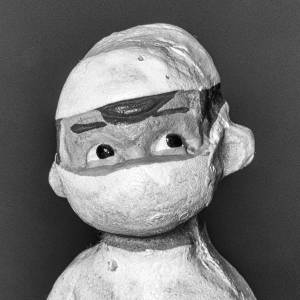Mono-Monday: "Distorted"
I “did” optical distortion in yesterday’s blip, so I decided to do a bit of lateral thinking for today’s Mono-Monday challenge on the topic “Distorted”. (I’ve recently been accused of being a blipping mad scientist - which I take as a compliment - so I have a reputation to keep up!)
This is a photo of part of my computer screen showing a graphical representation of amplitude distortion of an audio signal.
According to Wikipedia, “…amplitude distortion is distortion occurring…when the output amplitude is not a linear function of the input amplitude…” (in other words the output sound is different from the input sound – the pattern of sound waves is “damaged” in the system).
Audacity is an excellent freeware sound-recording program and I used it to record a small segment of Bruce Springsteen’s “Dancing in the Dark” (one of my favourite tracks). The graph shows the amplitude (strength) of the recorded audio signal (on the vertical axis) plotted against time (horizontal axis). The earlier part of the recording, on the left of the graph, shows a faithful representation of the input signal. However I had deliberately set the recording volume too high, so that when the music got louder (towards the right of the graph) the amplitude went off the scale of the graph – so that the peaks of the sound wave became clipped. The output (on playback) would therefore sound distorted.
Usually distortion is unwanted in sound recordings although rock and heavy metal guitarists often use it creatively.
(If any other mad scientists out there can explain this more clearly – or think anything I’ve said needs correcting - then please feel free to say so in the comments – I’ve done my best!)
It looks better viewed large.
Many thanks to Skeena for doing another stint of looking after Mono-Monday mantle this month.

Comments
Sign in or get an account to comment.


